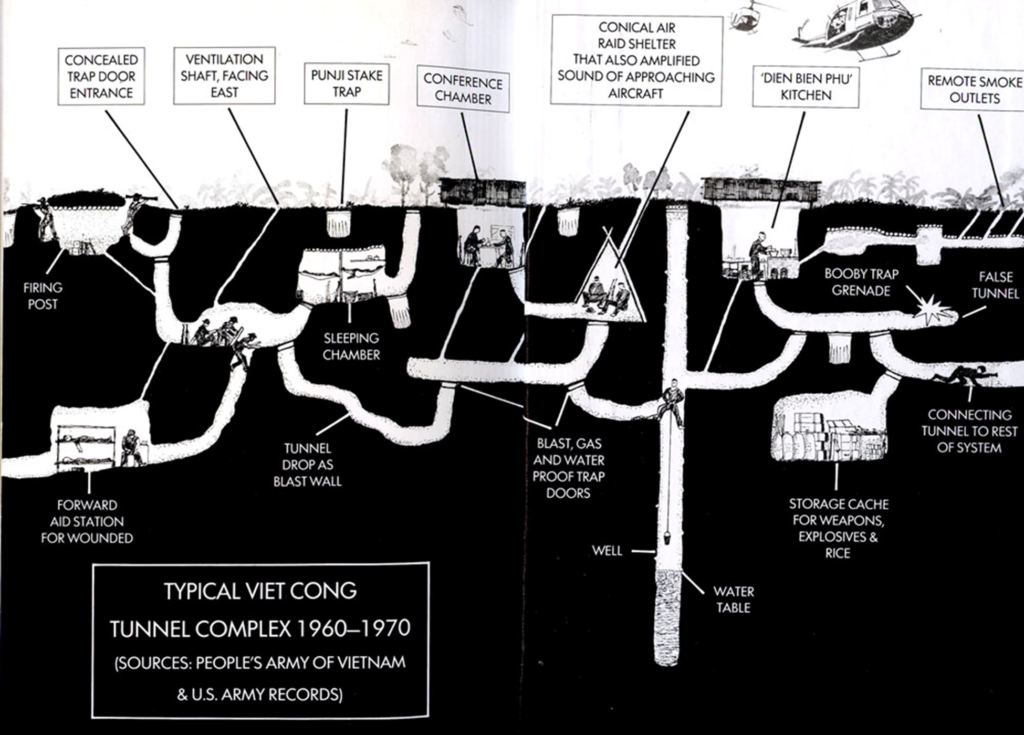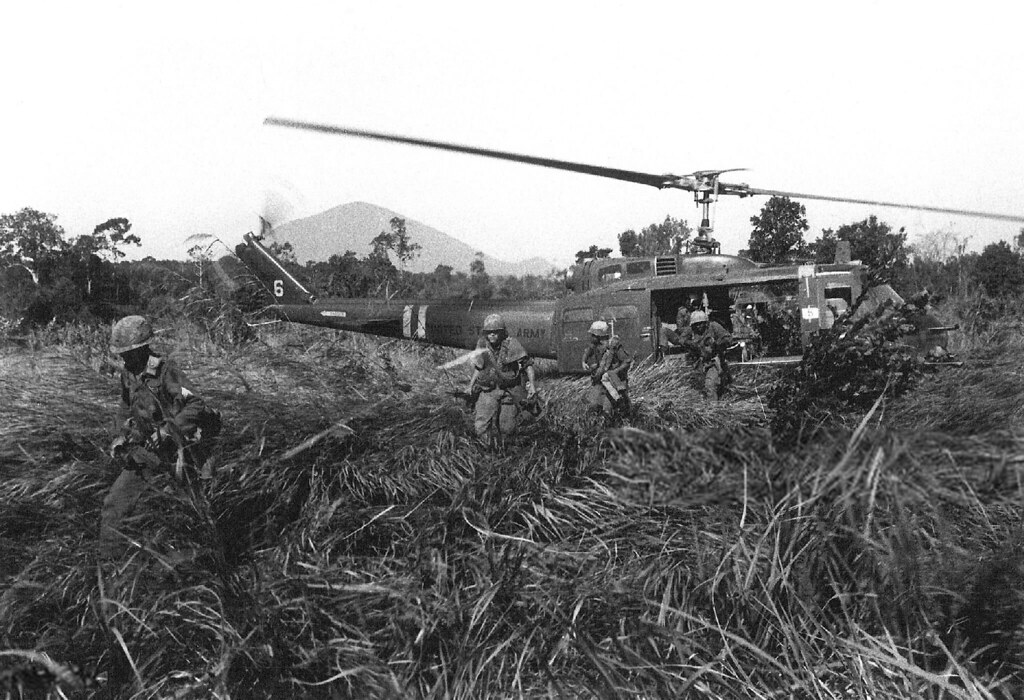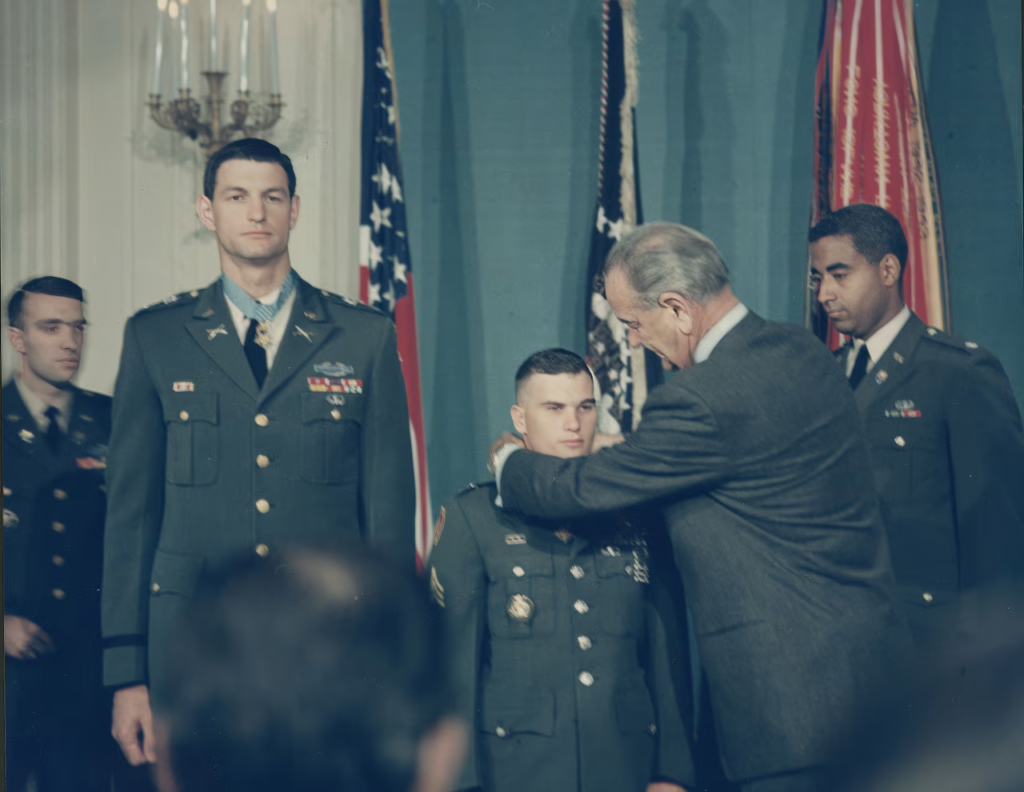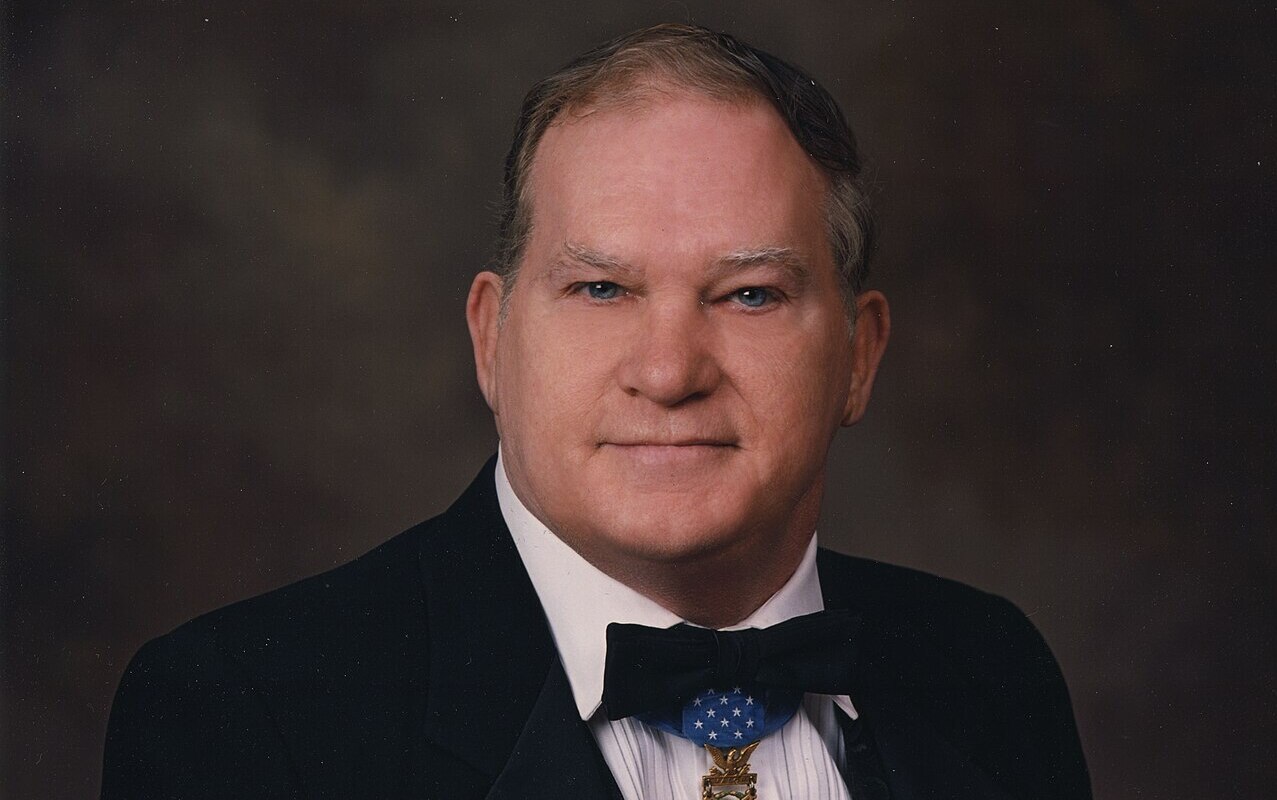One of the most daunting jobs of the Vietnam War – if not all of military history – was that of the “Tunnel Rats.” These brave men were tasked with entering tunnels dug by the Viet Cong as forward operating bases. Once inside these enemy strongholds, they would embark on search and destroy missions, clearing the underground complexes of any men and materiel with only a sidearm, bayonet, some explosives, and a flashlight for seeing in the dark depths.

Facing the Dangers of the Tunnels
Enemy troops weren’t the only dangers lurking in the tunnels beneath the jungles of Vietnam. They had to contend with scorpions, rats, snakes, booby traps, and flooded compartments – and it’s not as if they had a lot of room to maneuver once inside. Illinois native John F. Baker joined the Army in 1966. He would leave Vietnam with a Medal of Honor citation. What he did didn’t happen in the tunnels, but it might have been the tunnels which made him a fearless combatant in the face of the enemy.
John F. Baker, Jr. Joined Operation Attleboro
While still a private serving with A Company, 2nd Battalion, 27th Infantry Regiment, 25th Infantry Division, Baker was part of Operation Attleboro. It was an above-ground search and destroy-operation in what is today the Bin Duong Province of Vietnam. What began with the objective of finding North Vietnamese Army and Viet Cong units to force them into a fight soon became the largest airmobile operation in the country at the time.
On Nov. 3, 1966, the 2nd Battalion, 1st Infantry Regiment, and 4th Battalion, 31st Infantry Regiment were moving toward Ba Hao when they were ambushed by an unknown force of North Vietnamese regular infantry, who had held their fire until the Americans were nearly on top of them. Confused and surrounded by mines and booby traps, the U.S. soldiers fought overnight, unable to withdraw and facing multiple human wave attacks. To make matters worse, relief could not get to the beleaguered Americans.

The Heroism of John F. Baker, Jr.
John Baker, Jr. and the rest of the 2/27th infantry air assaulted into the area on Nov. 5. Only then could reinforcements reach their battered fellow soldiers. By noon that day, almost 48 hours after the North Vietnamese ambush began, the Americans finally broke out of the ambush zone. As you read what Baker did during the battle, keep in mind that tunnel rats had to be smaller in stature. Baker stood just 5’2″ and weighed all of 105 pounds at the time – he was about to punch well above his weight class.

Company A came under withering North Vietnamese fire, and their leader was killed in action. Baker stepped up to the head of the column. He and another soldier cleared two fortified enemy positions, but his battle buddy was mortally wounded. Taking fire from four different snipers, Baker killed all four of them and evacuated his buddy to safety. He then jumped back into the fray.

As he and another soldier moved to assault two more bunkers, Baker was blown to his feet by an exploding enemy grenade. Unfortunately (for the communists), the grenade blast didn’t kill Baker. It barely slowed him down. He got back up and destroyed a bunker. The other soldier, now wounded, fell next to him. Baker picked up the machine gun he carried and finished off the next bunker before evacuating his wounded buddy.

While in the rear, he refilled his ammo and headed back out into the fighting, but the American line was falling back. Baker evacuated a wounded man and came back to evacuate another but was pinned down by enemy snipers. He pushed ahead beyond the friendly lines to take them out, then returned to his wounded comrade and carried him to the rear. He returned to the battle once more to cover the unit’s withdrawal with his machine gun. When his ammo was spent, he carried two more wounded men out of the fray.
For his Incredible and repeated acts of heroism and gallantry in front of a determined enemy, he was recommended for the Medal of Honor. He received the award from President Lyndon B. Johnson in a 1968 ceremony at the White House. He would survive the war and go on to be active with the Congressional Medal of Honor Society, even serving as the organization’s vice president. John F. Baker, Jr. died in 2012 and was interred at Arlington National Cemetery. He was 66 years old.
Read About Other Profiles in Courage
If you enjoyed learning about MSgt John F. Baker, Jr., we invite you to read about other profiles in courage on our blog. You will also find military book reviews, veterans’ service reflections, famous military units and more on the TogetherWeServed.com blog. If you are a veteran, find your military buddies, view historic boot camp photos, build a printable military service plaque, and more on TogetherWeServed.com today.

0 Comments